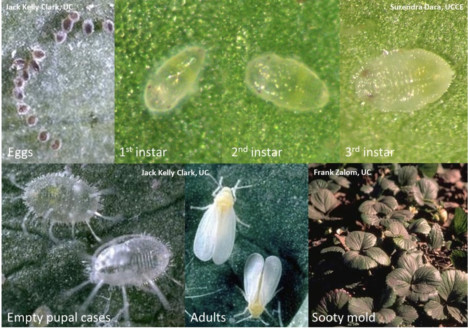Whiteflies Active This Month
Community Contributed
By Jennifer Hawkins, UH CTAHR Molokai Extension Agent
Whiteflies have been active so far this month both in the field and in the greenhouse. Whiteflies are tiny, small enough to get through the average shade house cloth. The adults resemble white moths, while the immature stages look like scale insects. Because the wings of the adult whitefly are covered with a white, waxy powder, they are difficult to wet. Some are vectors of plant viruses. One disorder, which is caused by whiteflies and you may have seen is known as silver-leaf. It is common in pumpkins and squash which have been infested with whiteflies.
I have most recently seen whitefly infestations in tomato, cucumber, banana, and guava. There are some parasitic wasps, predatory bugs, and other natural enemies which can assist with whitefly control, however, when our environment is out of balance, we often see an imbalance of our natural enemies. Other controls include spraying the insects off of your plants with a strong stream of water, using insecticidal soap, or even removing the leaves or branches of the plant for those with heavy infestations. Simply remove the infested portion of the plant and place it in a sealed bag and dispose of it properly. Chemical controls such as Imidacloprid or Neem Oil are also available. Read and follow the label directions as the label is the law! For monitoring, I like to use yellow sticky cards placed throughout the garden, field, or greenhouse. To make a simple homemade version of the yellow sticky card, simply take a yellow plastic cup and coat the outside of the cup with some type of white petroleum such as Vaseline. You can make a hole in the cup and tie it near the plants with a string or tape it to a chopstick and place the chopstick on a post or in the pot if your plants are being grown in containers. Check the card regularly to see what pests are visiting or invading your garden. Proper pest identification is the key to successful control. Contact the local Molokai Cooperative Extension office at 808-567-6929 or email if you need assistance with proper identification of your garden pest. For more information or to be added to the UH Cooperative Extension email list to receive updates and our newsletter, please mail andreaca@hawaii.edu.












Don't have a Molokai Dispatch ID?
Sign up is easy. Sign up now
You must login to post a comment.
Lost Password